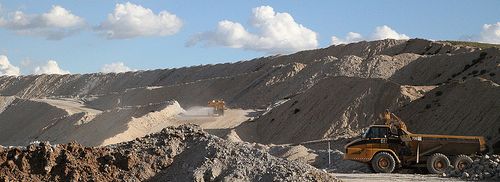
On April 1, 2013, the final phase of new regulations under Ontario’s Mining Act will come into effect. These changes to industry standards started when the Ontario government undertook its Mineral Development Strategy in 2006, and continued with legislative changes to the Mining Act in 2009. Many of the new practices took effect in 2011, but the final changes will all be in place by April 1.
A greater level of Indigenous consultation
The updated regulations, which include some new and some changed elements, are meant to better recognize Indigenous and treaty rights, private landowners’ claims, and environmental impacts in all stages of mineral extraction.
The primary change to the act is that government now requires industry to have greater consultation with both Indigenous communities and private landowners earlier in the exploration process. Claimants are required to notify both surface rights owners and Indigenous communities potentially affected by the claim at the exploration plan and permit stage; aboriginal communities will have the opportunity at these stages to provide comment and feedback. Whereas exploration plans and permits were voluntary prior to this year, they will be made mandatory when the act takes effect April 1.
Indigenous consultation is also required when submitting a certified closure plan or closure plan. Changes to the act also stipulate that Indigenous groups can apply to have culturally significant areas withdrawn from mining claim areas.
Additionally, anyone applying for or renewing a prospector’s license will have to undertake the Mining Act Awareness Program to learn about the changes to the legislation. As of Nov. 1, 2014, holders of a current prospector’s license will also have to complete this online program.
Other new rules include:
- Individuals or companies can now apply to voluntarily rehabilitate an existing mine site they did not create on Crown land without liability for pre-existing environmental conditions.
- When ground-staking a mining claim on land that has not been surveyed, claimants must include GPS geo-referencing data to support the claim.
- The process for requesting to obtain mineral samples has changed and thresholds have been set for what is considered a bulk sample.
Assessment Work Credits
Recognizing the additional onus the changes to the Mining Act put on industry, the government has included a provision for recouping the cost of Indigenous consultation. For more information about what is available under the new regulations, please review the eligible Assessment Work Credits.
For industry stakeholders, these new requirements for community consultation will mean a different way of operating.
In this changing business environment, companies are looking for solutions to successfully meet these new regulations. SustaiNet Indigenous Consultation Software is specifically designed to manage the type of individual and community input being mandated by the Ontario government, making the process easier for organizations and field practitioners.
For more information about SustaiNet stakeholder management and engagement software and eligibility under the Ontario Assessment Work please contact us today.
Image: Kate Ausburn

Leave a Reply